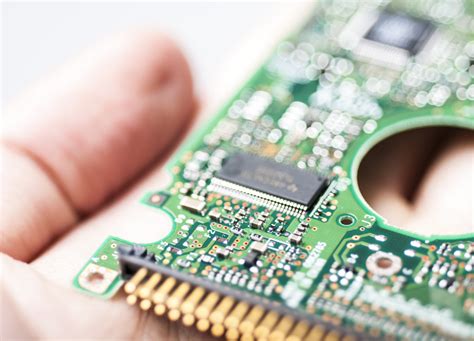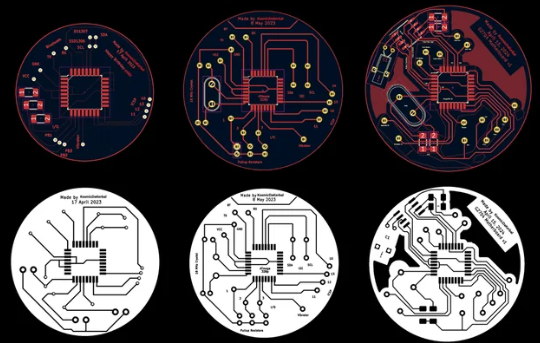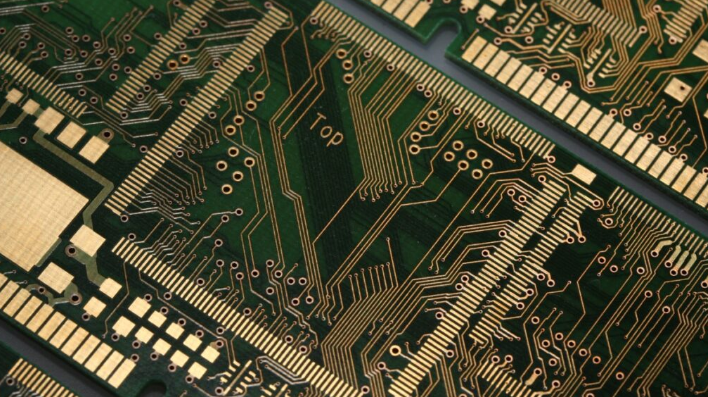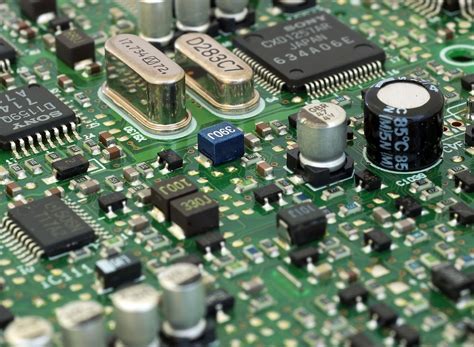Flexible rf pcb
Advantages Of Flexible RF PCB In Modern Electronics
Flexible RF PCBs, or flexible radio frequency printed circuit boards, have become increasingly significant in the realm of modern electronics, offering a multitude of advantages that cater to the evolving demands of contemporary technology. As electronic devices continue to shrink in size while expanding in functionality, the need for components that can adapt to these changes has never been more critical. Flexible RF PCBs provide a solution that not only meets these requirements but also enhances the overall performance and reliability of electronic systems.
One of the primary advantages of flexible RF PCBs is their ability to conform to complex shapes and fit into tight spaces.
This adaptability is particularly beneficial in applications where space is at a premium, such as in smartphones, wearable devices, and medical implants. By allowing for more efficient use of available space, flexible RF PCBs enable designers to create more compact and lightweight devices without compromising on functionality. This flexibility also facilitates the integration of additional features and components, thereby enhancing the overall capabilities of the device.
In addition to their spatial advantages, flexible RF PCBs offer superior performance in terms of signal integrity and electromagnetic interference (EMI) management.
The materials used in flexible PCBs, such as polyimide, exhibit excellent dielectric properties, which help maintain signal integrity even at high frequencies. This is crucial in RF applications where signal loss and distortion can significantly impact performance. Furthermore, the inherent flexibility of these PCBs allows for more effective routing of traces, reducing the risk of crosstalk and EMI, which are common challenges in high-density electronic designs.
Moreover, the durability and reliability of flexible RF PCBs make them an attractive choice for applications subjected to mechanical stress and environmental challenges.
Unlike rigid PCBs, flexible RF PCBs can withstand bending, twisting, and other forms of mechanical deformation without compromising their structural integrity. This resilience is particularly advantageous in applications such as automotive electronics and aerospace systems, where components are often exposed to harsh conditions and require a high degree of reliability.
Another noteworthy advantage of flexible RF PCBs is their potential for cost savings in both manufacturing and assembly processes.
The ability to fold and bend these PCBs can reduce the number of connectors and interconnects required, simplifying the assembly process and reducing the overall weight and complexity of the system. This not only lowers production costs but also enhances the reliability of the final product by minimizing potential points of failure.
Furthermore, the use of flexible RF PCBs aligns with the growing trend towards environmentally friendly and sustainable electronics.
The reduction in material usage and the potential for more efficient manufacturing processes contribute to a smaller environmental footprint. As industries increasingly prioritize sustainability, the adoption of flexible RF PCBs is likely to continue to rise.
In conclusion, the advantages of flexible RF PCBs in modern electronics are manifold, encompassing improved space utilization, enhanced performance, increased durability, cost efficiency, and environmental benefits. As technology continues to advance and the demand for more sophisticated electronic devices grows, the role of flexible RF PCBs is poised to become even more pivotal. Their ability to meet the complex requirements of modern applications while offering tangible benefits makes them an indispensable component in the future of electronics.
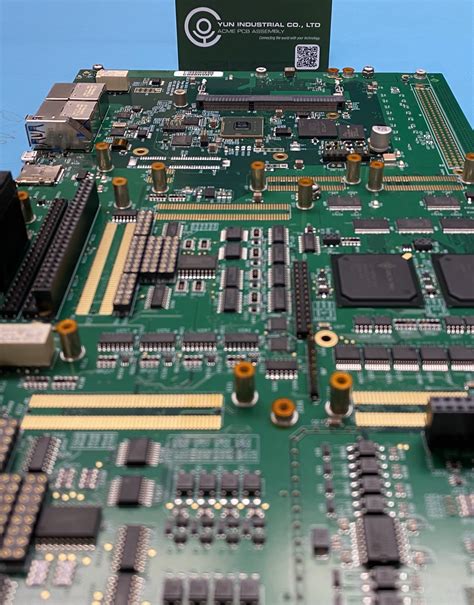
Design Considerations For Flexible RF PCB
When designing flexible RF PCBs, several critical considerations must be taken into account to ensure optimal performance and reliability. The unique characteristics of flexible PCBs, combined with the specific demands of RF applications, necessitate a careful approach to design.
One of the primary considerations is the choice of materials.
Flexible PCBs are typically made from polyimide or polyester substrates, which offer the necessary flexibility and thermal stability. However, for RF applications, the dielectric properties of these materials become crucial. The dielectric constant and loss tangent must be carefully evaluated to minimize signal loss and ensure efficient transmission of RF signals.
In addition to material selection, the layout of the flexible RF PCB plays a significant role in its performance.
The layout must be meticulously planned to minimize parasitic inductance and capacitance, which can adversely affect signal integrity. This involves careful routing of traces, maintaining consistent trace widths, and ensuring adequate spacing between traces to prevent crosstalk. Moreover, the use of ground planes is essential in RF designs to provide a return path for signals and to shield sensitive components from electromagnetic interference.
Another important aspect of designing flexible RF PCBs is the consideration of impedance control.
Impedance mismatches can lead to signal reflections, which degrade the performance of RF circuits. Therefore, maintaining controlled impedance throughout the PCB is vital. This can be achieved by carefully designing the trace geometry and stack-up, as well as by using simulation tools to predict and optimize impedance characteristics.
Thermal management is also a critical factor in the design of flexible RF PCBs.
RF components can generate significant amounts of heat, which can affect the performance and reliability of the PCB. Flexible PCBs, due to their thin and lightweight nature, may have limited thermal dissipation capabilities. Therefore, incorporating thermal vias, heat sinks, or other thermal management solutions is necessary to ensure that the PCB operates within safe temperature limits.
Furthermore, the mechanical properties of flexible RF PCBs must be considered during the design process.
The flexibility of these PCBs allows them to be bent and folded, which can be advantageous in certain applications. However, repeated bending or flexing can lead to mechanical stress and potential failure. To mitigate this risk, it is important to design the PCB with appropriate bend radii and to avoid placing components or vias in areas that will experience significant mechanical stress.
Finally, the manufacturing process for flexible RF PCBs requires careful attention to detail.
The fabrication of these PCBs involves different techniques compared to rigid PCBs, such as roll-to-roll processing and the use of specialized adhesives. Ensuring that the manufacturing process is compatible with the design specifications is crucial to achieving the desired performance and reliability.
In conclusion, designing flexible RF PCBs involves a complex interplay of material selection, layout optimization, impedance control, thermal management, mechanical considerations, and manufacturing processes. Each of these factors must be carefully addressed to ensure that the final product meets the stringent requirements of RF applications. By taking a comprehensive approach to design, engineers can create flexible RF PCBs that deliver high performance and reliability in a wide range of applications.

Manufacturing Challenges Of Flexible RF PCB
The manufacturing of flexible RF PCBs presents a unique set of challenges that require careful consideration and innovative solutions. As the demand for more compact and versatile electronic devices grows, the need for flexible RF PCBs has become increasingly prominent. These PCBs are essential in applications where space constraints and the need for flexibility are paramount, such as in wearable technology, medical devices, and advanced communication systems. However, the transition from traditional rigid PCBs to flexible RF PCBs is not without its hurdles.
One of the primary challenges in manufacturing flexible RF PCBs is the selection of suitable materials.
Unlike rigid PCBs, which are typically made from fiberglass-reinforced epoxy laminates, flexible PCBs require materials that can withstand bending and flexing without compromising performance. Polyimide is a common choice due to its excellent thermal stability and flexibility. However, the material’s properties must be carefully balanced to ensure that it can support the high-frequency signals typical of RF applications. This requires a deep understanding of material science and the ability to tailor material properties to meet specific design requirements.
In addition to material selection, the manufacturing process itself poses significant challenges.
The fabrication of flexible RF PCBs involves several complex steps, including etching, drilling, and plating, all of which must be adapted to accommodate the flexible nature of the substrate. Traditional manufacturing techniques may not be suitable, necessitating the development of specialized processes and equipment. For instance, the etching process must be precisely controlled to prevent over-etching, which can lead to signal loss and reduced performance. Similarly, drilling and plating must be executed with precision to ensure the integrity of the vias and interconnections.
Moreover, the assembly of components onto flexible RF PCBs requires meticulous attention to detail.
The inherent flexibility of the substrate can lead to challenges in component placement and soldering. Components must be carefully aligned and secured to prevent movement during the soldering process, which can result in misalignment and poor electrical connections. Advanced techniques such as surface mount technology (SMT) and automated optical inspection (AOI) are often employed to ensure accuracy and reliability.
Thermal management is another critical consideration in the manufacturing of flexible RF PCBs.
The compact nature of these PCBs, combined with the high power density of RF components, can lead to significant heat generation. Effective thermal management solutions must be implemented to dissipate heat and prevent damage to the PCB and its components. This may involve the use of thermal vias, heat sinks, or advanced cooling techniques, all of which must be carefully integrated into the design without compromising flexibility.
Finally, quality control and testing are essential to ensure the performance and reliability of flexible RF PCBs.
Given the complexity of these PCBs, comprehensive testing is required to identify any defects or performance issues. This includes electrical testing to verify signal integrity, as well as mechanical testing to assess the PCB’s ability to withstand bending and flexing. Advanced testing methods, such as time-domain reflectometry (TDR) and X-ray inspection, are often employed to provide detailed insights into the PCB’s performance.
In conclusion, the manufacturing of flexible RF PCBs is a complex process that requires a multidisciplinary approach. From material selection to assembly and testing, each step presents unique challenges that must be addressed to produce high-quality, reliable PCBs. As technology continues to evolve, the demand for flexible RF PCBs is likely to increase, driving further innovation and advancements in manufacturing techniques.

Applications Of Flexible RF PCB In Wireless Communication
Flexible RF PCBs, or flexible radio frequency printed circuit boards, have become increasingly significant in the realm of wireless communication, offering a multitude of applications that enhance both the functionality and efficiency of modern communication systems. As the demand for more compact, lightweight, and versatile electronic devices continues to grow, the role of flexible RF PCBs becomes ever more critical. These innovative components are designed to handle high-frequency signals while maintaining flexibility, making them ideal for a variety of applications in wireless communication.
One of the primary applications of flexible RF PCBs is in mobile devices, where space and weight are at a premium.
The compact nature of these PCBs allows for the integration of complex circuitry within the limited confines of smartphones, tablets, and wearable technology. By enabling the design of smaller and lighter devices without compromising on performance, flexible RF PCBs contribute significantly to the advancement of mobile technology. Moreover, their ability to withstand bending and flexing without damage makes them particularly suitable for devices that are subject to frequent movement and handling.
In addition to mobile devices, flexible RF PCBs are also extensively used in the development of antennas for wireless communication systems.
The flexibility of these PCBs allows for the creation of antennas that can be easily integrated into various surfaces and structures, facilitating the design of more efficient and aesthetically pleasing communication devices. This adaptability is particularly beneficial in the automotive and aerospace industries, where the integration of communication systems into vehicles and aircraft requires components that can conform to irregular shapes and surfaces.
Furthermore, flexible RF PCBs play a crucial role in the Internet of Things (IoT), where they are used to connect a wide array of devices and sensors.
The IoT ecosystem relies heavily on wireless communication to transmit data between devices, and flexible RF PCBs provide the necessary infrastructure to support these connections. Their ability to accommodate high-frequency signals ensures reliable data transmission, which is essential for the seamless operation of IoT devices. As the IoT continues to expand, the demand for flexible RF PCBs is expected to increase, driving further innovation in this field.
Another significant application of flexible RF PCBs is in the field of medical devices.
The healthcare industry is increasingly adopting wireless technology to improve patient care and streamline operations. Flexible RF PCBs are used in a variety of medical devices, including wearable health monitors and implantable devices, where their flexibility and reliability are paramount. These PCBs enable the development of devices that can monitor vital signs and transmit data wirelessly, providing healthcare professionals with real-time information that can be used to make informed decisions about patient care.
In conclusion, the applications of flexible RF PCBs in wireless communication are vast and varied, spanning multiple industries and contributing to the advancement of technology in numerous ways. Their unique properties, including flexibility, lightweight design, and ability to handle high-frequency signals, make them indispensable in the development of modern communication systems. As technology continues to evolve, the role of flexible RF PCBs is likely to expand further, paving the way for new innovations and applications in wireless communication.

